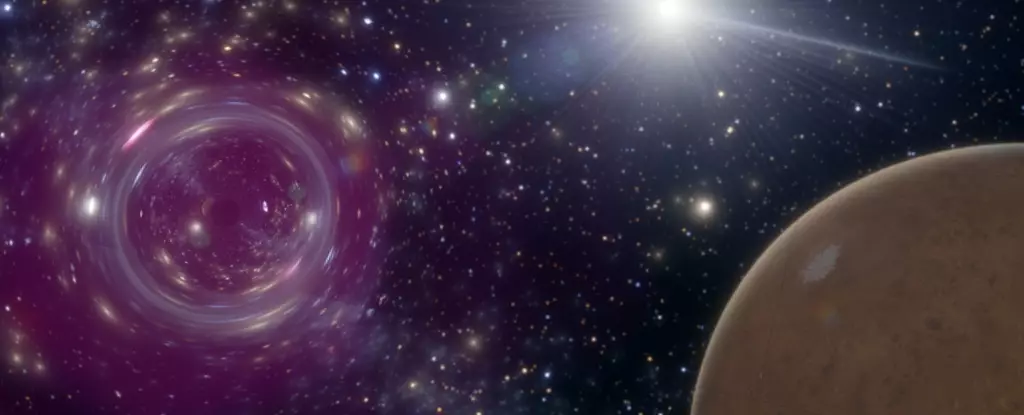The question of what permeates our universe’s fabric continues to mesmerize scientists and enthusiasts alike. Among the myriad hypotheses surging forth from the realms of theoretical physics, primordial black holes (PBHs) hold a remarkable significance. These hypothetical cosmic entities, thought to have originated within moments of the Big Bang, arise from the gravitational collapse of extremely dense pockets of ionized matter. Crucially, PBHs offer a compelling explanation for dark matter—an elusive component of the cosmos that, while undetectable by conventional means, manifests its influence solely through gravitational interactions.
Given the vast timescale of 13.8 billion years, it is plausible that these ancient black holes have undulated across the universe, potentially crossing through our Solar System on occasions far more frequent than previously contemplated. A recent study led by a team of physicists in the United States postulates that these tiny, primordial objects may traverse our cosmic neighborhood approximately every decade.
How exactly can we pinpoint the presence of a PBH? This research proposes an intriguing method: observing the subtle gravitational effects these entities could exert on Mars. When a PBH enters the inner Solar System, its gravitational tug could induce a detectable wobble in Mars’ orbit, revealing the presence of an otherwise invisible force. Although the predicted wobble would only be about one meter over the course of a decade, current technological advancements allow us to measure Mars’ distance from Earth within a ten-centimeter accuracy, making this minuscule shift significant for observation.
The study sprung from an imaginative inquiry: what would be the aftermath if a PBH zipped perilously close to a human? The lead author, astrophysicist Tung Tran from the Massachusetts Institute of Technology (MIT), humorously estimated that a PBH approaching within a meter could send a person hurtling six meters away in the blink of an eye. While this scenario is fantastical, it opened a Pandora’s box of questions regarding how such cosmic entities interact with larger celestial bodies.
Intrigued by the possibilities, the researchers broadened their scope to evaluate how a PBH flyby could impact not just Mars, but also Mercury and Venus. Among the planets examined, Mars emerged as the prime candidate for detecting the wobble, chiefly due to its rigorous monitoring and data collection by space agencies. The implications of a PBH’s gravitational influence lead to further queries: if an object of asteroid mass can cause detectable gravitational effects, should we not expect similar interactions from asteroids traversing our path as well?
The short answer is yes, but the longer explanation sheds light on some pivotal differences. Unlike a PBH, which travels freely through the cosmos at extraordinary speeds of up to 200 kilometers per second, asteroids generally follow slower, more predictable orbits around the Sun. Their interactions with planets happen over extended periods, lacking the acute, momentary effects of PBHs.
As captivating as the hypothesis may be, the findings beckon further research to refine our understanding of these dynamics. The initial simulation provides a glimpse into cosmic possibilities, but researchers caution that establishing a nuanced picture of PBHs requires detailed studies involving numerous variables and varying conditions. Understanding how typical space debris compares to these rapid-moving primordial black holes will help clarify their distinctive signatures and interactions within our Solar System.
The excitement surrounding the discovery of potential Martian wobbles exemplifies the broader quest to unlock some of the universe’s most profound mysteries. As the precision of observational technologies evolves, the tantalizing notion of witnessing the indirect signs of PBHs may move from mere speculation to tangible reality.
The study of primordial black holes encapsulates a fascinating intersection of astrophysics and cosmology. These ancient relics of the universe could eventually unveil crucial insights into dark matter, one of the most enigmatic components of our cosmos. As we push the boundaries of our understanding, we stand at the brink of possibly unraveling secrets embedded in the fabric of space-time itself. The prospect of spotting a PBH by its gravitational effects on Mars offers not just a scientific milestone, but also a profound glimpse into the cosmic dance of existence that envelops our Solar System. The pursuit of this knowledge may well illuminate our understanding of the universe and our place within it.

